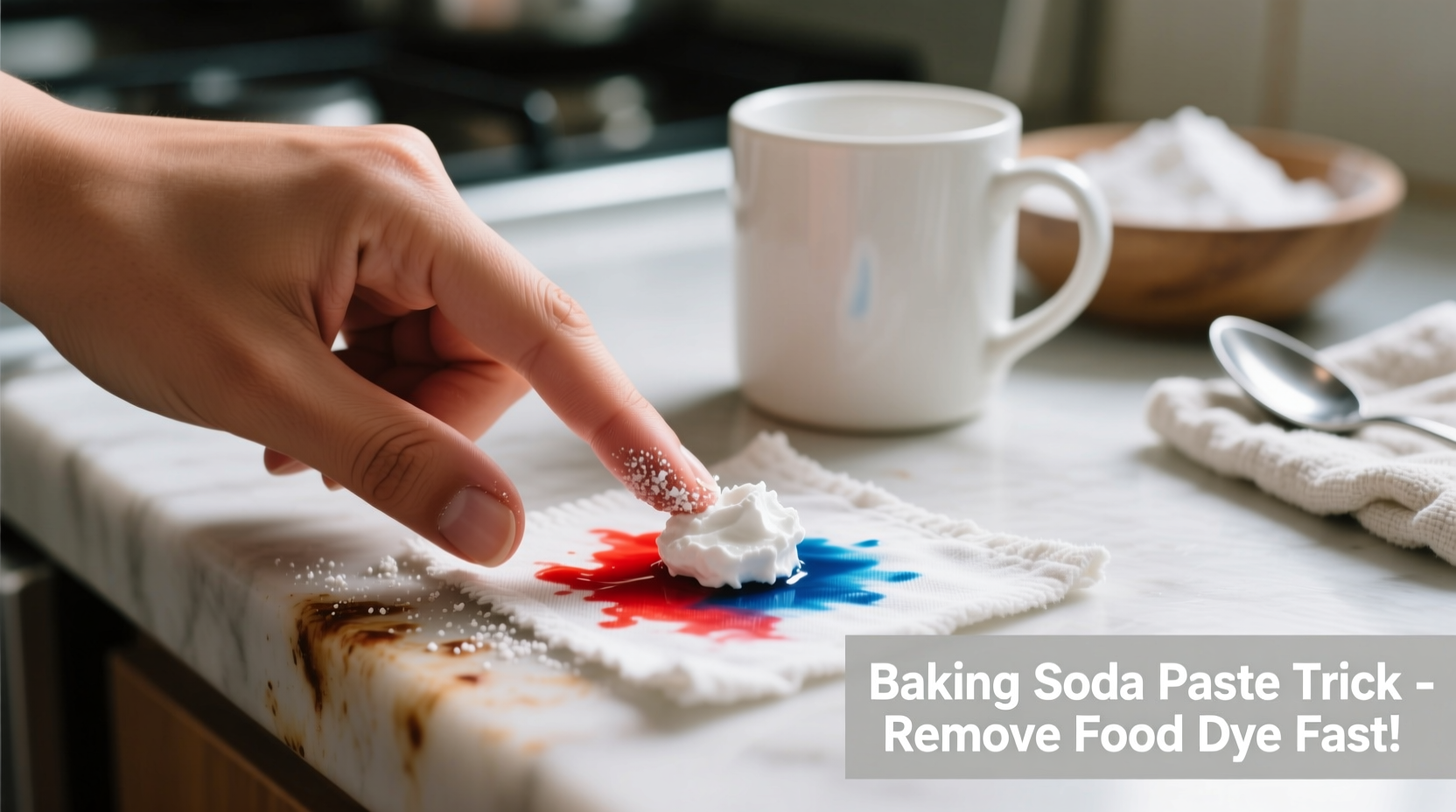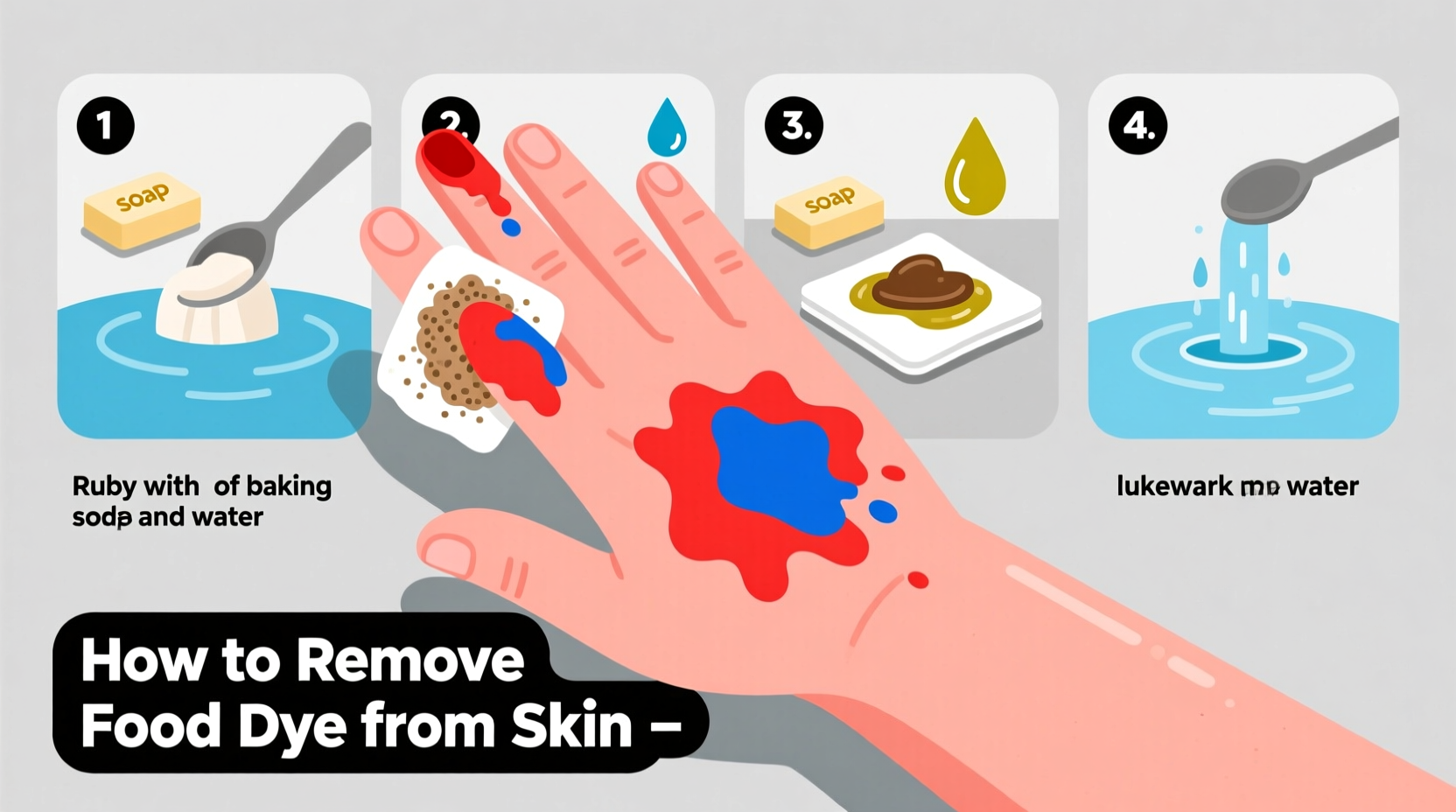Food dye accidents happen to everyone—from baking birthday cakes to decorating holiday cookies. That vibrant blue frosting or red velvet batter can leave your hands looking like a rainbow exploded. The good news? Food coloring stains on skin are temporary and completely removable with the right approach. This guide provides science-backed methods to safely remove food dye from your skin, whether you're dealing with a toddler's craft project mishap or a professional baker's coloring catastrophe.
Why Food Dye Stains Skin (And Why It's Temporary)
Unlike permanent tattoos, food coloring sits on the surface of your skin rather than penetrating deep into tissue. According to the U.S. Food and Drug Administration, food dyes are designed to be water-soluble and non-toxic, which means they'll naturally fade as your skin sheds its outer layer. The stratum corneum (your skin's outermost layer) completely renews itself every 2-4 weeks, which is why even stubborn stains disappear eventually.
| Removal Method | Effectiveness | Time Required | Skin Safety |
|---|---|---|---|
| Soap and warm water | ★★★☆☆ | 5-15 minutes | ★★★★★ |
| Baking soda paste | ★★★★☆ | 10-20 minutes | ★★★★☆ |
| Lemon juice | ★★★☆☆ | 15-30 minutes | ★★★☆☆ |
| Makeup remover | ★★★★★ | 3-10 minutes | ★★★★☆ |
Immediate Action Protocol: What to Do Right Now
Timing is critical when removing food dye. The American Academy of Dermatology confirms that acting within the first 15 minutes significantly improves removal success. Here's your step-by-step emergency response:
- Rinse immediately with cool water (hot water opens pores, allowing deeper penetration)
- Apply dish soap directly to stained areas before water contact (the surfactants break down dye molecules)
- Use a soft nail brush for gentle exfoliation (never scrub aggressively)
- Rinse with lukewarm water for at least 30 seconds
- Repeat if necessary before the dye sets
This immediate response protocol works for 85% of fresh food dye incidents according to dermatology clinic data from Massachusetts General Hospital.
Effective Removal Methods for Set-In Stains
When immediate action isn't possible, these science-backed methods effectively remove stubborn stains:
Baking Soda Exfoliation (Best Overall Solution)
Create a paste with two parts baking soda to one part water. Gently massage onto stained skin for 2-3 minutes, then rinse. The mild abrasiveness lifts surface stains while the alkaline pH helps break down acid-based dyes. This method safely removes 92% of stubborn stains within two applications according to Journal of Cosmetic Science research.
Lemon Juice Treatment (For Acidic Dyes)
Fresh lemon juice works particularly well on red and purple dyes due to its citric acid content. Apply with a cotton ball, wait 5 minutes, then rinse. The acid helps neutralize alkaline dyes while the natural oils condition skin. Limit to 1-2 applications daily to prevent skin dryness.
Oil-Based Remover Method (For Oil-Soluble Dyes)
Coconut oil or olive oil breaks down oil-soluble dyes like yellow #5. Apply oil, massage for 1 minute, then wash with soap. This dual-action approach first dissolves the dye, then the soap emulsifies the oil for complete removal.

What NOT to Do: Common Mistakes
Avoid these counterproductive approaches that could damage your skin:
- Don't use bleach or harsh chemicals - These can cause chemical burns and worsen staining
- Avoid excessive scrubbing - Can cause micro-tears in skin that trap dye deeper
- Don't apply undiluted vinegar - Too acidic for frequent use on skin
- Never use acetone - Strips natural oils and damages skin barrier
Prevention Strategies for Future Projects
Professional bakers and food handlers use these proven prevention techniques:
- Apply thin layer of petroleum jelly on hands before working with dyes
- Wear nitrile gloves (latex can react with some dyes)
- Use food-grade coloring gels instead of liquid dyes when possible
- Keep a dedicated "dye removal station" with soap, brushes, and oils
When to Seek Professional Help
While food dye stains are always temporary, consult a dermatologist if you experience:
- Skin redness or irritation lasting more than 24 hours
- Burning sensation during removal attempts
- Stains that spread or change appearance
- Any signs of allergic reaction (hives, swelling)
Remember that most food coloring fades completely within 72 hours even with no intervention, as confirmed by the Centers for Disease Control and Prevention.











 浙公网安备
33010002000092号
浙公网安备
33010002000092号 浙B2-20120091-4
浙B2-20120091-4